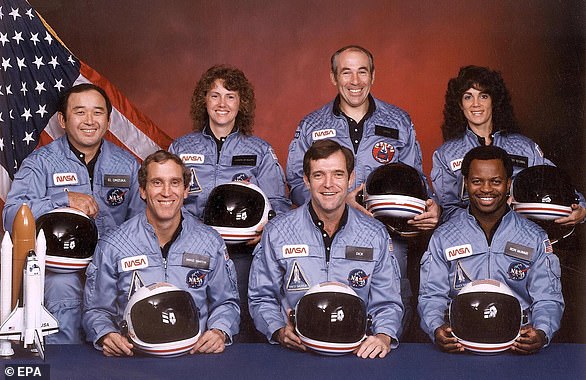Space Shuttle Columbia Disaster: Step-by-step image shows exactly what went wrong during the fatal 2003 incident – and how it changed NASA forever
It’s been just over 21 years since one of the darkest days in NASA history.
On the morning of February 1, 2003, Space Shuttle Columbia disintegrated as it re-entered the atmosphere over Texas and Louisiana.
The seven astronauts on board – David Brown, Rick Husband, Laurel Clark, Kalpana Chawla, Michael Anderson, William McCool and Ilan Ramon – were all killed.
The tragic event is being retold for a BBC Two documentary series airing on BBC Two from this week. ‘The Space Shuttle that fell to Earth’.
MailOnline has revealed a step-by-step chart showing exactly what went wrong on that fateful morning that changed NASA forever.
Damage to Columbia sustained during the shuttle’s launch in January 2003 resulted in its inability to undertake a safe return
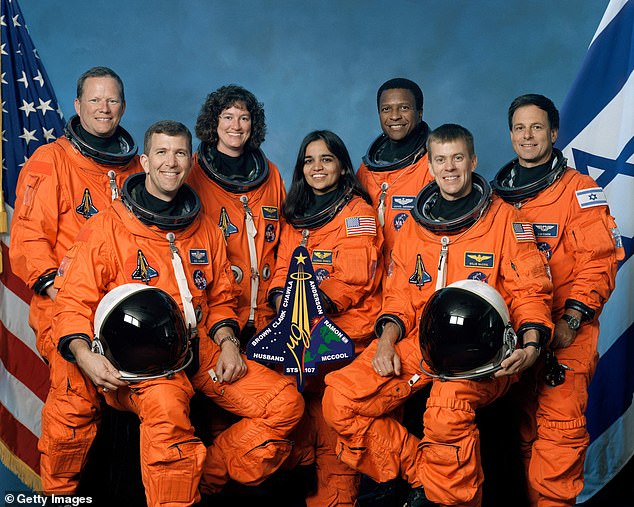
(L-R) David Brown, Rick Husband, Laurel Clark, Kalpana Chawla, Michael Anderson, William McCool and Ilan Ramon died in the 2003 Space Shuttle Colombia disaster
Space Shuttle Colombia had completed a 16-day mission, officially designated by NASA as ‘STS-107’.
As a research mission, the crew was in space 24 hours a day performing various chores related to scientific experiments.
According to NASA, everything had gone largely smoothly.
“The astronauts exceeded scientists’ expectations in the science they acquired during their 16 days in space,” the report said.
However, one problem during the January 16 launch would later prove fatal.
82 seconds after the explosion, a piece of foam insulation, about the size of a briefcase, broke off the external tank and struck the orbiter’s port wing.
Some NASA ground control personnel were aware of the foam and worried about the damage it could cause upon reentry.
On January 23, the eighth day of the mission, J. Steve Stich from mission control notified two crew members – Rick Husband and William McCool – of the foam attack by email, including a video clip of the impact.
However, Stich assured them that because the phenomenon had occurred during previous missions, there was no concern for damage to the vehicle or for reentry.
Images show the foam falling and the damage to the wing during the launch:
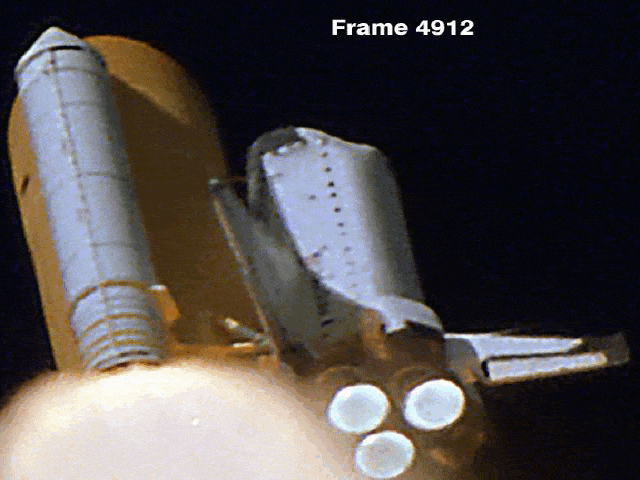
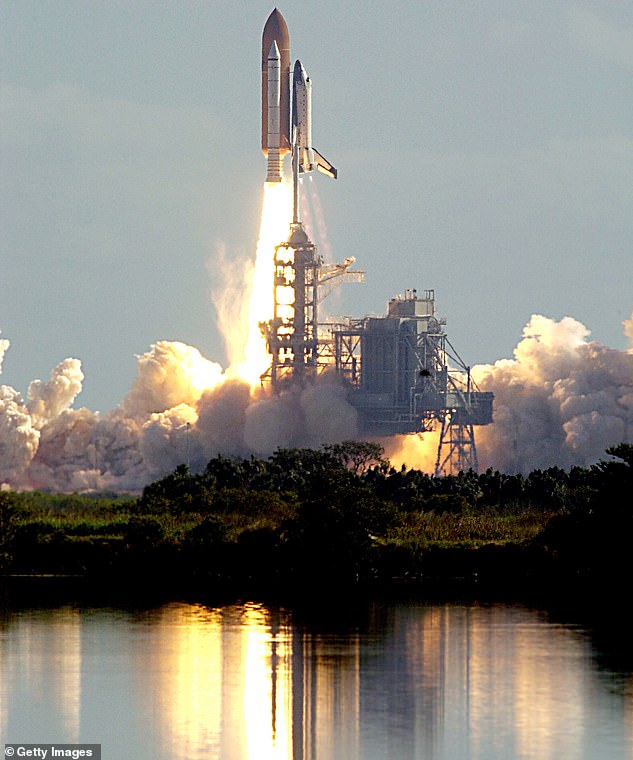
The Space Shuttle Columbia, on mission STS-107, launches from the Kennedy Space Center in Cape Canaveral, Florida, on January 16, 2003
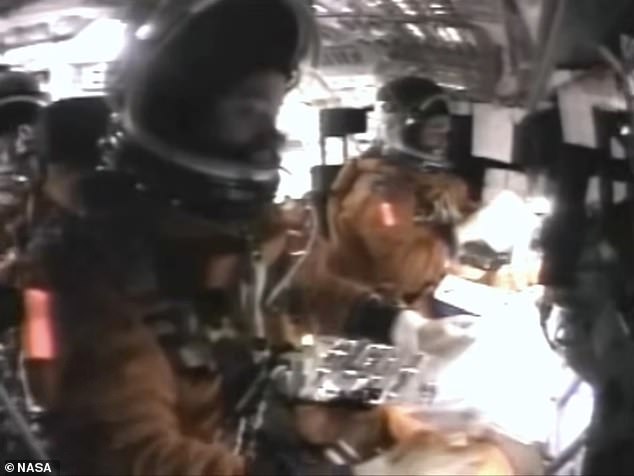
A chilling video shared to Reddit in 2022 shows the crew’s last harrowing moments in the cockpit before Colombia began to fall apart
Engineers on the ground continued to assess the impact of the foam impact and requested high-resolution imaging of the affected area to conduct a more thorough analysis – but ultimately managers denied the request.
It later emerged that some staff were aware of the extent of the damage, but said there was ‘nothing we could do’.
There was no way to repair any suspected damage as the crew was far from the International Space Station and had no robotic arm for repairs.
Still unaware of the impending danger to their lives, the Columbia crew on January 28 paid tribute to their fellow astronauts lost 17 years earlier in the Challenger accident and the Apollo 1 launch pad fire in 1967 .
On the day of the crew’s scheduled return on February 1, NASA personnel were faced with the terrible decision of whether to inform the astronauts that they might die upon reentry or whether to remain in orbit until the oxygen ran out.
Those on the ground decided it would be better if the crew were spared knowledge of the risks.
As Colombia prepared to reenter the atmosphere, the damage caused by the foam allowed hot atmospheric gases to enter and destroy the internal wing structure.
When the vehicle returned, this damaged part of the wing was exposed to extreme heat for a long period of time.
Tragically, this caused the spacecraft to become unstable and break up about 60 kilometers above the Earth’s surface.
The resulting debris was found scattered across Texas in subsequent years, including helmets, heat shield tiles and, unfortunately, the remains of the astronauts themselves.
It is thought the crew was only aware of their situation for about a minute before the vehicle disintegrated and likely blacked out once their crew module lost pressure.
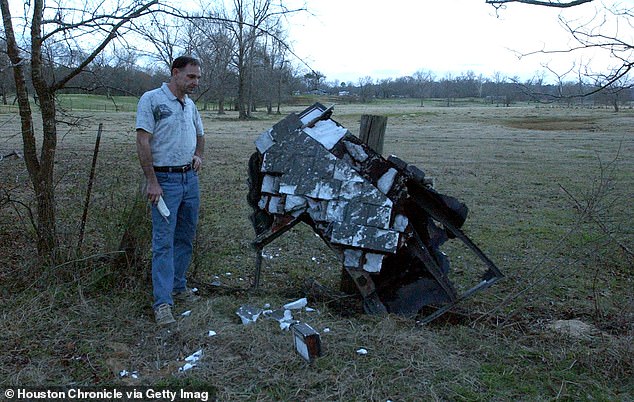
Mac Powell stands next to what he believes is the suspected damaged left wing of the fallen space shuttle Columbia, on his property in Nacogdoches County, Texas in 2003

Debris from the Columbia Space Shuttle lies on the floor of the RLV Hangar on May 15, 2003 at Kennedy Space Center, Florida
When Mission Control confirmed that the shuttle had broken out over Texas, flight director Leroy Cain ordered the room locked and all computer data saved for later review.
In August 2003, the Columbia Accident Investigation Board (CAIB) released its findings on the cause of the disaster and made a series of recommendations.
The CAIB report criticized NASA’s organizational and safety culture and found similar errors that led to the 1986 Challenger accident.
After the deadly incident, President George W. Bush’s administration decided to end the Columbia shuttle program.
In addition, the remaining three shuttles, Discovery, Atlantis and Endeavor, remained grounded until NASA and its contractors could develop means to prevent similar accidents, including kits for in-orbit repairs.
Today, the Orion spacecraft, built for crewed missions to the moon as part of NASA’s upcoming Artemis program, has a safety system that allows the crewed part to be separated from the launch vehicle in the event of a launch problem.
Shockingly, the Columbia shuttle did not have this option.
NASA also reached a $27 million settlement with the Columbia families in 2007.
The disaster will be retold in a BBC Two documentary series airing on BBC Two this week. ‘The Space Shuttle that fell to Earth’.
It covers the unfolding disaster and its consequences shared by the astronaut’s families, as well as NASA personnel involved in the mission.

